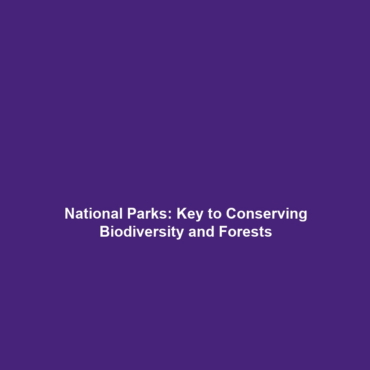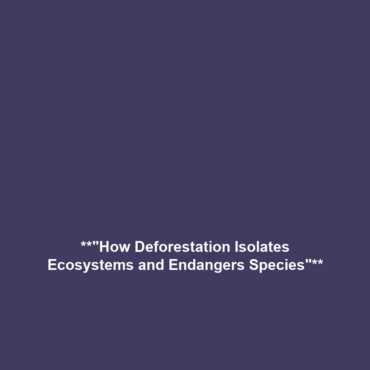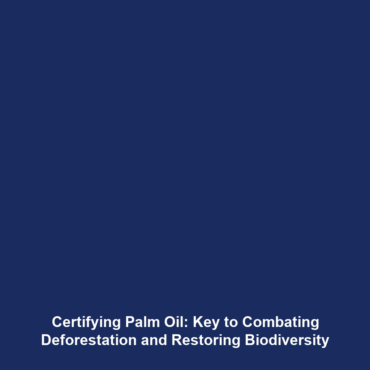National Parks, Wildlife Reserves, and Protected Areas: Tools for Conserving Biodiversity and Forests
Introduction
National parks, wildlife reserves, and protected areas are critical strategies in the fight against deforestation and biodiversity loss. As the destruction of forests accelerates, these conservation areas emerge as vital havens for diverse ecosystems and species. The effective management of these protected areas plays an essential role in preserving both flora and fauna, offering a sustainable path forward amid the increasing threats posed by human activities.
Key Concepts
Understanding the role of national parks, wildlife reserves, and protected areas requires a grasp of several key concepts:
Conservation Areas
National parks and wildlife reserves are designated lands specifically protected to maintain biodiversity and ecological integrity. These areas not only help reduce the impact of deforestation but also serve as natural laboratories for researchers and scientists.
Biodiversity Hotspots
Protected areas often encompass biodiversity hotspots, regions that are rich in plant and animal species but threatened by habitat loss. Identifying and prioritizing these hotspots are crucial for effective conservation strategies.
Applications and Real-World Uses
The applications of national parks, wildlife reserves, and protected areas extend into various real-world scenarios:
- Ecotourism: Many countries have utilized their protected areas to promote ecotourism, generating revenue while educating the public about conservation.
- Wildlife Management: Protected areas serve as wildlife sanctuaries, offering safe habitats for endangered species recovering from the brink of extinction.
- Research Opportunities: National parks provide invaluable opportunities for scientific research, helping to monitor ecosystem changes and develop better conservation techniques.
Current Challenges
Despite their importance, several challenges persist in the effective implementation of national parks, wildlife reserves, and protected areas as tools for conservation:
- Funding Issues: Many protected areas lack sufficient funding for maintenance and biodiversity monitoring.
- Encroachment: Increasing human populations often lead to encroachment on these protected lands, resulting in habitat destruction.
- Climate Change: The effects of climate change threaten the ecological balance that these protected areas aim to preserve.
Future Research and Innovations
The future of national parks and protected areas lies in innovation and ongoing research. Potential breakthroughs include:
- Remote Sensing Technologies: Advancements in satellite imagery and drones for monitoring biodiversity and land use changes.
- Genetic Conservation Strategies: Developing techniques to preserve the genetic diversity of endangered species.
- Community Involvement Programs: Strategies that engage local communities in conservation efforts, leveraging their knowledge of the land.
Conclusion
National parks, wildlife reserves, and protected areas are indispensable tools in the ongoing fight against deforestation and biodiversity loss. By implementing effective management and engaging in innovative practices, we can ensure the survival of countless species and the protection of vital ecosystems. It is imperative that we support these conservation efforts through policy advocacy, education, and community involvement. For further reading on biodiversity conservation, explore our pages on biodiversity initiatives and solutions to deforestation.


